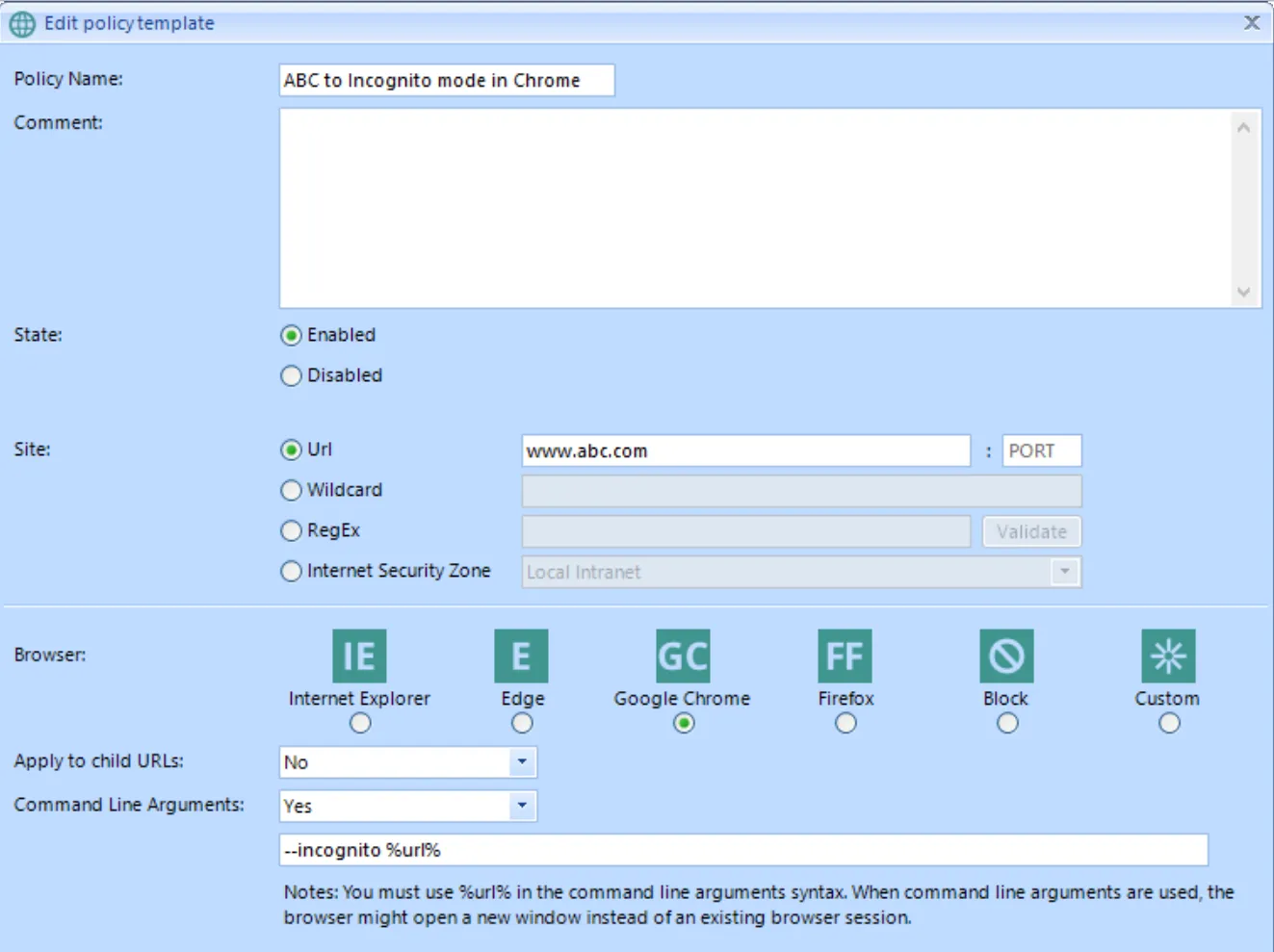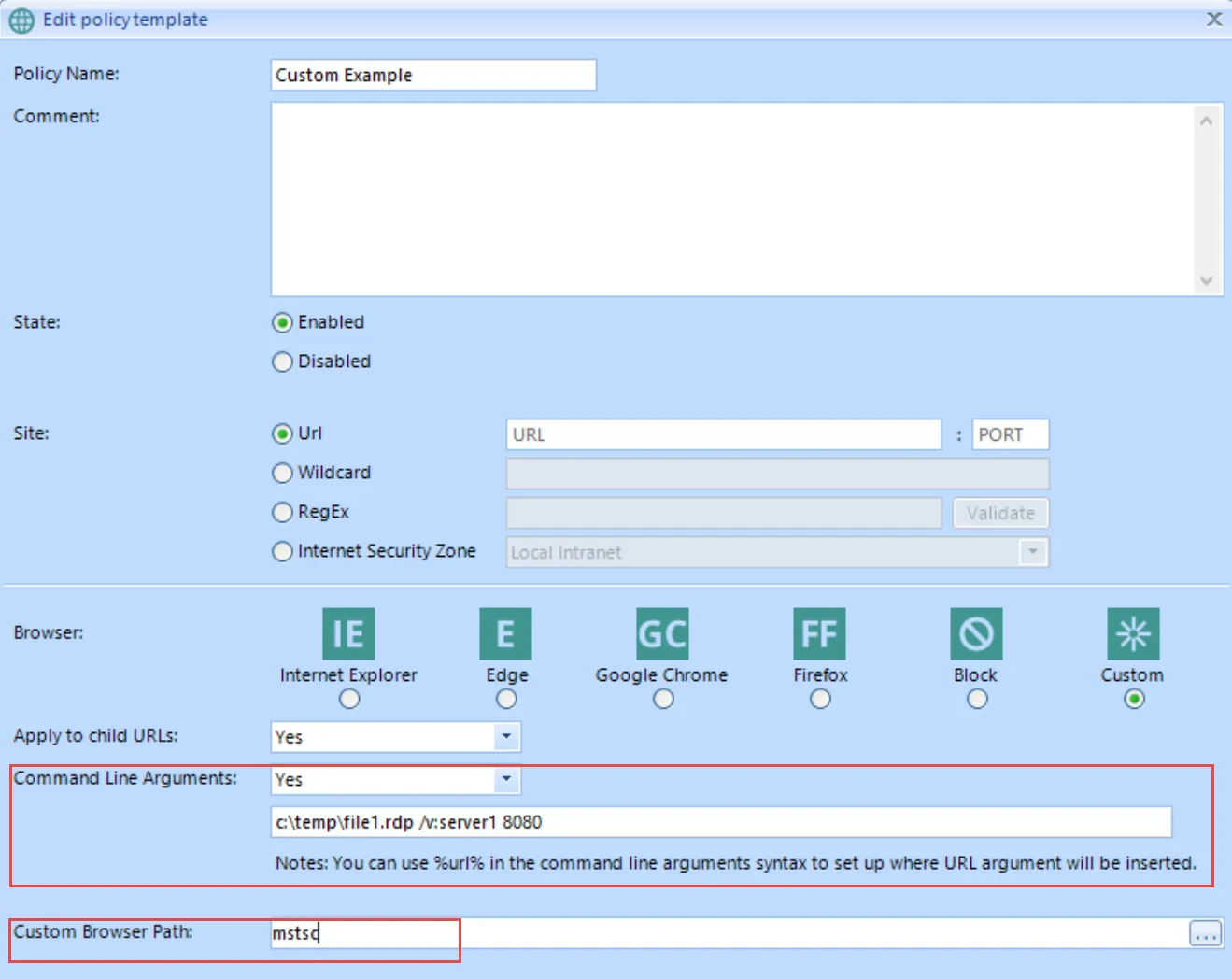Using Command Line Arguments
This feature enables you to create a route in situations where you start off in the wrong browser
and want to open up the right browser, with specific options such as -incognito for Chrome and
-private-window for Firefox, or launch a custom App-V virtualized Internet Explorer plugin like
this one:
-noframemerging /appwe:76d7f387-c5c4-44a9-8982-cca6124a6aec.
Below is an example of launching www.abc.com in Chrome's incognito mode.

Note how you must specifically include %url% to specify where the URL will reside on the command line. Just selecting incognito by itself is not enough. The %url% will populate the correct URL, and it is up to you to place it correctly within the command line arguments structure, based on your needs.
Another use for the Custom policy that utilizes command line arguments might be if you want to launch a specific non-browser application instead of launching an actual browser. For example, one use might be to launch a Remote Desktop Protocol (RDP) session that calls a remote program, which would usually be a browser on the RDP machine.
To do this, select Custom for the browser type. Then set the Command Line Arguments field to
Yes. Finally, in the Custom Browser Path and Command Line Arguments field, specify the
application you want to launch (as in, MSTSC) and the command line arguments to pass (as in,
c:\temp\file1.rdp /v:server1 8080).
